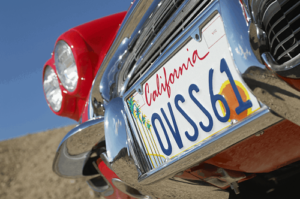Every driver needs car insurance, but many make the mistake as simply buying the same amount as their parents or friends. Each vehicle and driver are different, and thus you need insurance tailored for you and your vehicle.
State Required Insurance
At the very minimum, you must carry the amount of car insurance required by your state. Each state may have different limits, so check your area below to determine how much minimum car insurance you need.
Most states require bodily injury liability and property damage liability, which covers expenses related to injury and property damage you may cause while operating the insured vehicle. This includes coverage for medical expenses related to an injury another driver or their passengers may sustain.
Requirements are presented as per person/per accident/per accident.
According to Texas law, all drivers within the state must carry at least:
- $30,000 in bodily injury liability per person
- $60,000 in bodily injury liability per accident
- $25,000 in property damage liability
This doesn’t mean you have to purchase only the bare minimum, however. If you believe you need higher liability limits due to the nature of your vehicle (if you drive a sports car, for example) or any other reason, you should ask your insurance agent about possibly purchasing higher limits of liability.
Additional Insurance Options
Aside from state required insurance, you should also invest in enough coverage to compensate for physical damage to your vehicle. This can be calculated depending on your vehicle’s value. Important coverages included in full coverage policies include:
- Comprehensive coverage provides compensation for damages to the insured vehicle due to fire, wind, hail, lightning, smoke, falling objects, theft, vandalism and other incidents not involving collision.
- Collision coverage provides compensation for damages to the insured vehicle due to collision with another vehicle or object.
- Medical payments cover the medical expenses of the driver and their passengers after an accident, no matter who is at fault.
- Uninsured/underinsured motorist coverage provides compensation for accidents involving another driver who is not carrying insurance at the time of the accident.
- Roadside assistance covers expenses related to unexpected trip interruptions, such as a flat tire, running out of gas and towing.
- A full coverage policy is no single policy. It is simply a car insurance policy that contains the most amount of coverage that is available to cover your vehicle. Many drivers have full coverage car insurance without even realizing it.
Do I Need Full Coverage Car Insurance?
It’s generally recommended that drivers carry full coverage car insurance to protect against any possible incident. If you only have liability and a tree falls on your car, for example, you would be looking to pay for repairs out of pocket without comprehensive coverage.
On the other hand, there are instances where you may not want or need full coverage car insurance. Say you drive a vehicle that is almost fifteen years old. Its parts are no longer replaceable, and the value of the vehicle is depreciated greatly over the years. In this case, it could be more expensive to insure the vehicle with full coverage than it would be to simply replace the vehicle after an accident. You could actually save money by simply choosing minimum auto insurance requirements, especially if you plan on replacing the vehicle if anything happens to it, anyway.
Can I Drop from Full Coverage to Liability?
You should be able to adjust you car insurance coverage at any time, although it’s recommended that you speak with your car insurance agent before making drastic changes. But if the value of your car depreciates and you decide that you’d rather only have liability insurance, you should be able to adjust the coverage on your policy. The opposite is also true. Say you have only liability coverage on your policy, but your teenager is added to your policy. Teenagers are statistically more likely to get into accidents, so you may want to upgrade to full coverage car insurance.
Is Full Coverage Car Insurance More Expensive Than Liability?
As a rule, the more coverage you have the more you will pay in monthly premiums. To compare, the average cost of full coverage car insurance in Texas is around $1,823 a year (about $152 a month) while the average cost of minimum liability requirements in Texas is about $414 a year (about $25 a month). This is a large difference, but keep in mind that less coverage also means that you may be faced with paying for damages and injuries out of pocket after an accident.
There are other factors that can influence the cost of your car insurance premiums as well, such as your age, driving record, credit score and the value of your vehicle. Be sure to speak with our San Angelo car insurance agent if you need assistance deciding how much insurance you need for your vehicle.





